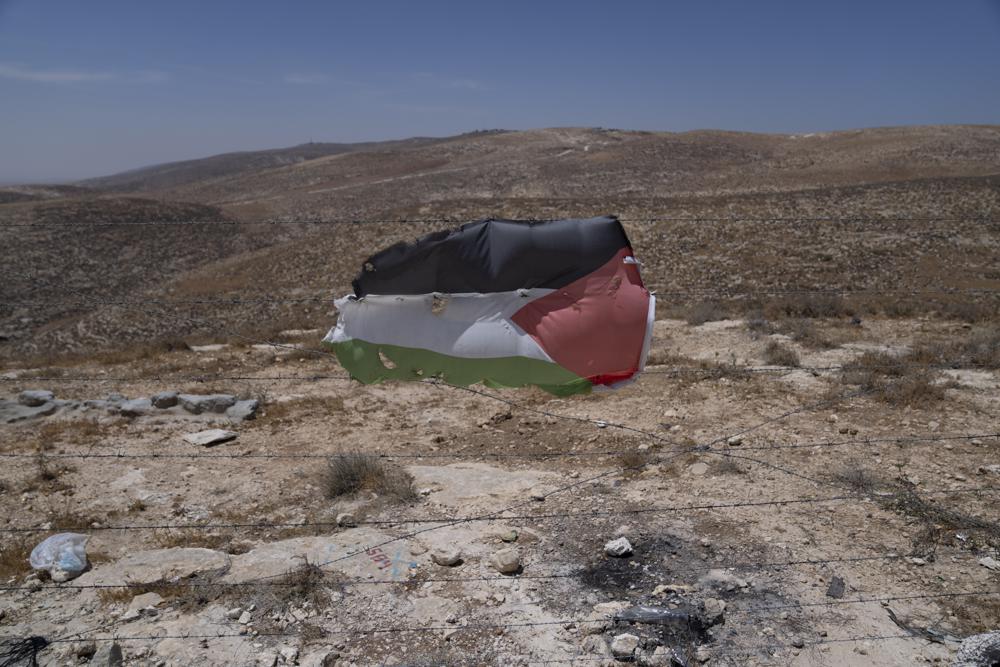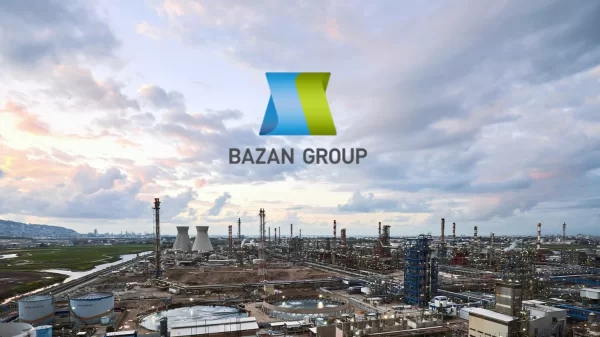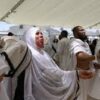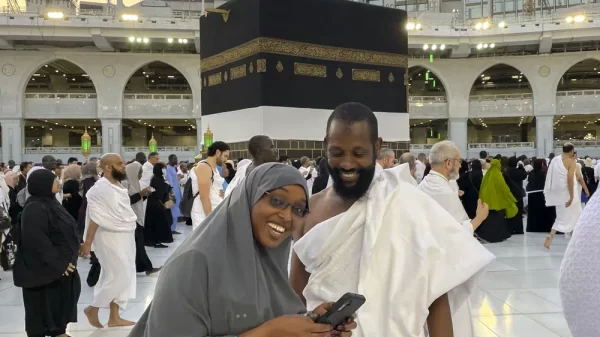A Palestinian flag is posted at a barbed wired at the Palestinian hamlet of Khallat al-Dhaba, in the cluster of Bedouin communities in Masafer Yatta, West Bank, Monday, Aug. 1, 2022. Palestinians living in Masafer Yatta, in the occupied West Bank, fear they could be expelled at any time after Israel’s Supreme Court ruled in favor of the military earlier this year in a two-decade legal battle. (AP Photo/Nasser Nasser)
AL-FAKHEET, West Bank (AP) — After repeatedly rebuilding his home only to have it demolished by Israeli soldiers, Mohammed Abu Sabaha has a new plan to remain on the land — he is moving into a cave.
Abu Sabaha is among some 1,000 Palestinians at risk of expulsion from an arid region of the occupied West Bank that the Israeli military has designated as a live-fire training zone. Israel’s Supreme Court upheld their expulsion in May after a two-decade legal battle.
Most residents of the area, known as Masafer Yatta, have remained in place since the ruling, even as Israeli security forces periodically roll in to demolish structures. But they could be forced out at any time, and rights groups fear Israel will do it gradually to evade international scrutiny.
The entrance to Abu Sabaha’s cave is surrounded by the ruins of homes and animal pens that the soldiers demolished in earlier raids. The coo and cackle of chickens can be heard from inside a wrecked coop. A set of stone steps leads down into the cave, where he has strung up electrical lights, but it will take time to turn it into a home for his wife, parents and six children.
“We have suffered a lot because of this ruling. Especially the kids, who were born here,” he said, standing in the dimly lit cave. “They fled demolitions, then went back when we rebuilt, so many times.”
When the army isn’t demolishing homes it is staging training exercises nearby. Tanks throw up dust clouds and heavy machine-gun fire and explosions echo across the desert hills. Abu Sabaha says his 3-year-old daughter Zeynab tenses up every time she sees them.
“She’s always afraid they will come to destroy once again,” he said.
The military declared this part of Masafer Yatta a firing and training zone in the early 1980s. Israeli authorities said the residents — Arab Bedouin who practice a traditional form of agriculture and animal herding — only used the area part of the year and had no permanent structures there at the time. In November 1999, security forces expelled some 700 villagers and destroyed homes and cisterns. The legal battle began the following year.
The families say they have been there for decades — from long before Israel captured the West Bank in the 1967 Mideast war — and have nowhere else to live. Some residents have traditionally resided in caves part of the year, as they graze sheep and goats in different areas.
Israel’s Supreme Court sided with the state in May, after the villagers rejected a compromise that would have allowed them to enter at certain times and practice agriculture for part of the year.
Since then, the army has demolished several structures and seized vehicles, setting up roadblocks and checkpoints to limit movement, according to Nidal Younes, head of the local council.
“All of this is within the framework of occupation, to frighten, to scare, to make people’s lives extremely difficult to force them to leave,” he said.
Masafer Yatta is in the 60% of the occupied West Bank known as Area C, where the Israeli military exercises full control under interim peace agreements reached with the Palestinians in the 1990s. Palestinian structures built without military permits — which residents say are nearly impossible to obtain — are at risk of demolition.
Area C is also home to several Jewish settlement outposts that are protected by the army despite being built without Israeli authorization. Nearly 500,000 settlers live in communities across the West Bank, most of which were planned and approved by the government. Many resemble small towns or suburbs, with apartment blocks, shopping malls and factories.
The Palestinians and the international community view the settlements as a major obstacle to resolving the century-old conflict because they absorb and divide up the land on which a future Palestinian state would be established alongside Israel.
Israel officially considers the West Bank disputed territory subject to negotiations, but every government since 1967 has expanded settlements, and the country’s dominant right-wing parties are opposed to Palestinian statehood. One of the Supreme Court justices who issued the ruling on Masafer Yatta is a settler.
Eugene Kontorovich, a legal scholar at Israel’s Kohelet Policy Forum, a right-wing think tank, said Israel could not allow “private squatters to determine the uses of state land” and was justified in barring people from entering a military firing range.
“The technical, legal justification is that it’s not their land,” he added.
Rights groups say several other Palestinian communities across the West Bank could face similar threats of expulsion if the international community does not pressure Israel over Masafer Yatta. Israel has declared firing zones in 20% of the West Bank, affecting some 5,000 Palestinians from 38 communities, according to the U.N. Office for the Coordination of Humanitarian Affairs.
Dror Sadot, a spokeswoman for the Israeli rights group B’Tselem, said Israel would likely implement a “quiet transfer” in which it gradually makes life so difficult that families trickle out on their own.
The Association for Civil Rights in Israel, which has been waging a legal battle on behalf of the residents of Masafer Yatta for more than two decades, has filed another petition against the Supreme Court ruling.
Roni Pelli, an attorney with the group, said the “terrible ruling” goes against international law, which prohibits the transfer of civilians out of occupied territory.
“The legal consequence is that international humanitarian law is no longer relevant in the West Bank because the military commander can issue any order he wants,” she said.
“You don’t have to put people on trucks to force them from the land,” she added. “I am really, really worried that it might become a humanitarian disaster.”
Associated Press reporters Emily Rose in Jerusalem and Nasser Nasser in al-Fakheet, West Bank contributed to this report.
Copyright 2021 Associated Press. All rights reserved.
Source: https://apnews.com/article/middle-east-israel-west-bank-caves-2dfa46fff45e9bb5145d165c070fccbe






























You must be logged in to post a comment Login